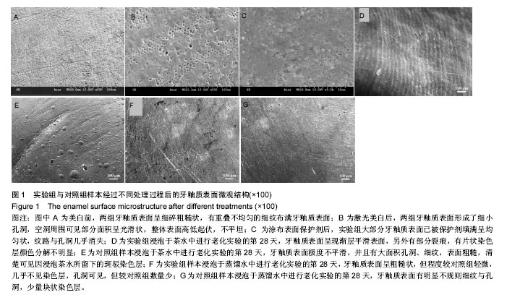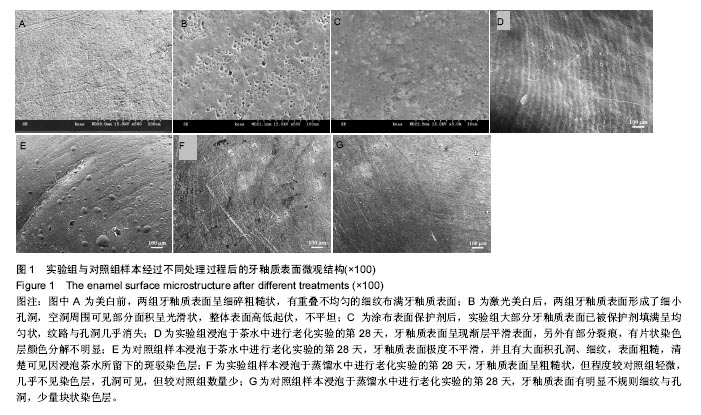| [1]Joiner A.The bleaching of teeth: a review of the literature. JDent.2006;34(7):412-419.[2]Dahl JE,Pallesen U.Tooth bleaching-a critical review of the biological aspects.Crit Rev Oral Biol Med. 2003;14(4): 292-304.[3]Wetter NU,Walverde D,KatoI T,et al. Bleaching efficacy of whitening agents activated by xenon lamp and 960-nm diode radiation.Photomed Laser Surg.2004;22(6):489-493. [4]Sulieman M,Addy M,Rees JS.Development and evaluation of a method in vitro to study the effectiveness of tooth bleaching. J Dent.2003;31(6):415-422.[5]Sulieman M,Addy M,MacDonald E,et al.The effect of hydrogen peroxide concentration on the outcome of tooth whitening: An in vitro study.J Dent.2004;32(4):295-299.[6]Russell MD,GulfrazM,MossBW.In vivo measurement of color change in natural teeth.J Oral Rehabil.2000;27(9):786-792.[7]何宝凤.牙齿漂白药物凝胶剂的研制及疗效观察[J].天津药学, 1996,8(3):57-59.[8]Hayward R,Osman Y,Grobler SR. A clinical study of the effectiveness of a light emitting diode system on tooth bleaching.Open Dent J.2012;6(5):143-147.[9]Morgan S,Jum'ah AA,Brunton P.Assessment of efficacy and post-bleaching sensitivity of home bleaching using 10% carbamide peroxide in extended and non-extended bleaching trays.Br Dent J.2015; 218(10):579-582.[10]Deliperi S,Bardwell DN,Papathanasiou A.Clinical evaluation of a combined in-office and take-home bleaching system.J Am Dent Assoc.2004;135(5):628-634.[11]Zhao K,Zong L,Zhang Q,et al.Clinical comparison between two bleaching techniques: a 180-day follow-up study. Quintessence Int.2013;44(8):601-607.[12]Bazzi JZ,Bindo MJ,Rached RN,et al.The effect of at-home bleaching and toothbrushing on removal of coffee and cigarette smoke stains and color stability of enamel.J Am Dent Assoc.2012;143(5):1-7.[13]梁保刚.Beyond光治疗生理性黄牙疗效及安全性评价[J].中国实用口腔科杂志,2009,2(4):9-51.[14]程立,胡德渝.激光漂白牙齿的研究进展[J].国外医学(口腔医学分册),2006,33(3):213-215.[15]冯昭飞,庞凤梅.冷光牙齿漂白术对不同类型着色牙漂白效果的临床评价[J].现代口腔医学杂志,2007,21(4): 438-439.[16]赵奇,王君香,冯朝华.冷光牙齿漂白技术对活髓牙牙髓影响的病理观察[J].中华口腔医学杂志,2007,42(12):718-719.[17]Liang S,Sa Y,Jiang T,et al.In vitro evaluation of halogen light-activated vs chemically activated in-office bleaching systems.Acta Odontol Scand.2013;71(5):1149-1155.[18]Klaric E,Rakic M,Marcius M,et al.Optical effects of experimental light-activated bleaching procedures.Photomed Laser Surg.2014;32(3):160-167.[19]Hayward R,Osman Y,Grobler SR.A clinical study of the effectiveness of a light emitting diode system on tooth bleaching.Open Dent J.2012;6:143-147.[20]Zekonis R,Matis BA,Cochran MA,et al.Clinical evaluation of in-office and at-home bleaching treatment.Oper Dent. 2003; 28(2):114-121.[21]Al Shethri S,Matis BA,Cochran MA,et al.A clinical evaluation of two in-office bleaching products.Oper Dent. 2003;28(5): 488-495.[22]Sharafeddin F,Nouri H,Koohpeima F.The Effect of Temperature on Shear Bond Strength of Clearfil SE Bond and Adper Single Bond Adhesive Systems to Dentin. J Dent (Shiraz).2015;16(1):10-16.[23]Al Machot E,Noack B,Hoffmann T.In vitro evaluation of two whitening regimens using color-analyzing methods. Quintessence Int.2010;41(2):145-156.[24]Martin-Biedma B,Gonzalez-Gonzalez T,Lopes M, et al. Colorimeter and scanning electron microscopy analysis of teeth submitted to internal bleaching.J Endod. 2010;36(2): 334-337.[25]Moghadam FV,Majidinia S,Chasteen J,et al.The degree of color change, rebound effect and sensitivityof bleached teeth associated with at-home and power bleaching techniques: A randomized clinical trial.EurJ Dent.2013;7(4):115-120.[26]孙旭东,佟宇.冷光美白技术治疗变色牙的临床疗效观察[J].中国美容医学,2009,18(7):95-96.[27]马净植,魏望萍,王岩,等.两种漂白方法对离体牙牙釉质表面粗糙度及菌斑粘附能力的研究[J].口腔医学研究, 2006,22(6): 622-624.[28]Bitter NC.A scanning electronic microscope study of the long-term effect of bleaching agents on the enamel Surface in vivo.Gen Dent.1998;46(1):84-88.[29]Titley K,Torneck CD,Smith D.The effect of concentrated hydrogen peroxie solutions on the surface morphology of human tooth enamel.J Endod.1988;14(2):69-74. |





